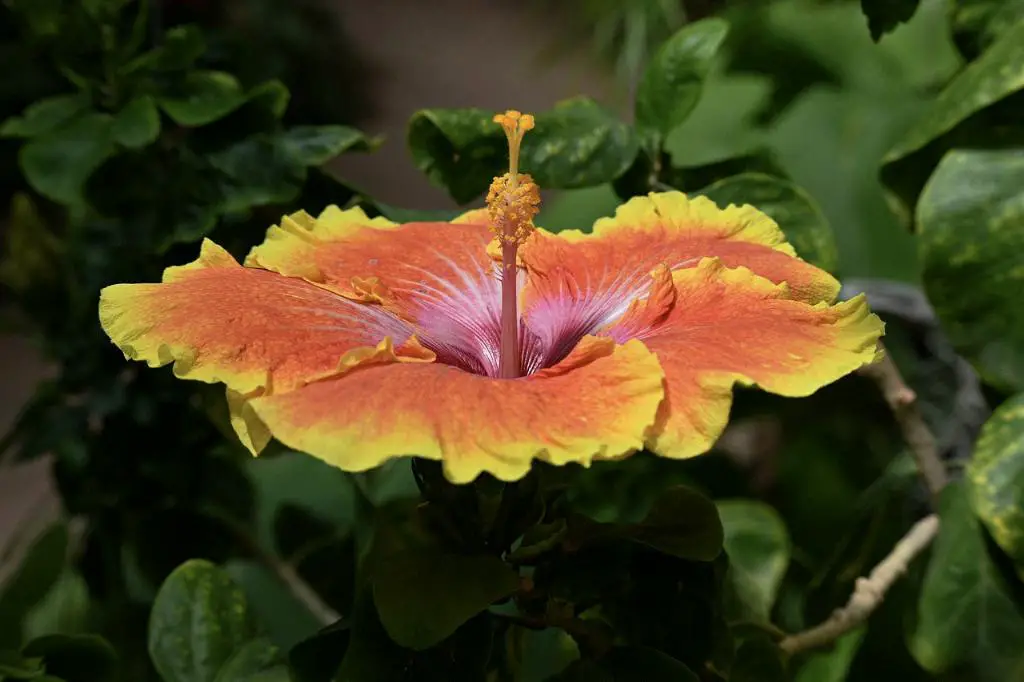When examining a hibiscus plant, one may ponder the question: Does Hibiscus Have Seeds? The answer lies in the intricate seed pods that develop after the plant’s blossoms have bloomed. Hibiscus plants, particularly the Hibiscus syriacus variety, boast seed pods that resemble larger, smooth green capsules. It is crucial to note that these pods are indeed seed pods and not flower buds, as they play a vital role in the plant’s reproductive cycle.
Identifying Ripe Seed Pods
As the seed pods on a hibiscus plant mature, they undergo a visual transformation. Initially green, these pods eventually ripen to a brown hue as they approach full maturity. At this stage, the woody capsule housing the seeds begins to open, signaling that the seeds are primed for release. This natural process showcases the plant’s ability to disperse its seeds effectively.
Revealing Nature’s Ingenious Design
The presence of seeds within hibiscus plants exemplifies the intricate design of nature. These seeds serve as the starting point for future growth, embodying the plant’s commitment to continuity and propagation. By producing seeds within their distinctive pods, hibiscus plants ensure the preservation of their species through successive generations.
Understanding Seed Dispersal Mechanisms
Seed dispersal is a crucial aspect of a plant’s life cycle, facilitating the expansion of its habitat and population. In the case of hibiscus plants, the opening of the seed pods marks the beginning of the dispersal process. Once the seeds are released from their capsules, they can be carried by various means, such as wind, water, or animal transport, allowing for new hibiscus growth in diverse locations.
Emphasizing the Vital Role of Seeds
Seeds are the essence of life for hibiscus plants, serving as the genetic blueprint for their development and growth. The presence of seeds within the plant ensures genetic diversity, enabling adaptation to changing environmental conditions. By nurturing and dispersing these seeds, hibiscus plants contribute to the biodiversity of their ecosystem.
Appreciating the Beauty of Seed Formation
The process of seed formation in hibiscus plants is a marvel to behold, representing the plant’s natural cycle of renewal and regeneration. From the initial flowering stage to the eventual seed pod development, each step underscores the plant’s resilience and vitality. Observing the transition of a hibiscus blossom into a seed pod is a testament to the plant’s inherent capacity for regeneration.
Highlighting the Significance of Reproduction
Reproduction is a fundamental aspect of plant life, ensuring the continuation of species and the perpetuation of genetic traits. Hibiscus plants, with their distinct seed pods, exemplify the intricate process of reproduction in the botanical world. Through the production and dissemination of seeds, hibiscus plants safeguard their genetic legacy for future growth and evolution.
Exploring the Role of Pollination
Pollination plays a pivotal role in seed development for hibiscus plants, fostering the transfer of pollen between flowers to initiate seed formation. As pollinators such as bees and butterflies visit hibiscus blooms, they facilitate the fertilization process crucial for seed production. This symbiotic relationship between plants and pollinators underscores the interconnectedness of nature’s mechanisms.
Illustrating the Diversity of Hibiscus Species
Within the vast family of hibiscus plants, a diverse array of species exists, each with unique characteristics and adaptations. Despite this diversity, the common thread among hibiscus plants is their ability to produce seeds, ensuring the continuation of their lineage. Whether in tropical climates or temperate regions, hibiscus species worldwide exhibit the innate capacity for seed production and dispersal.
Recognizing the Environmental Benefits of Seed Dispersal
Seed dispersal by hibiscus plants yields broader ecological advantages, contributing to the maintenance of biodiversity and ecosystem resilience. By distributing seeds across different landscapes, hibiscus plants support the growth of new vegetation and foster habitat diversity for various wildlife species. This interconnected web of seed dispersal ensures the sustainability of ecosystems and promotes environmental balance.
Embracing the Cycle of Life in Hibiscus Plants
As we delve into the intricacies of hibiscus seed production and dispersal, we gain a deeper appreciation for the cyclical nature of plant life. From the initial formation of seeds within pods to their eventual dissemination in the environment, hibiscus plants embody the resilience and adaptability of the natural world. By nurturing the seeds of today, hibiscus plants pave the way for the growth and regeneration of tomorrow.
Reflecting on Nature’s Timeless Wisdom
In conclusion, the question “Does Hibiscus Have Seeds?” invites us to explore the profound interconnectedness of life on Earth. Through the intricate process of seed production and dispersal, hibiscus plants demonstrate nature’s timeless wisdom and commitment to perpetuating the cycle of creation. By honoring the seeds within hibiscus plants, we embrace the beauty and resilience of the botanical world, celebrating the innate capacity for growth and renewal that thrives within every seed.

